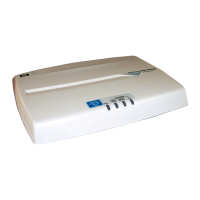5-64
General System Configuration
Managing Group Configuration
■ The local RADIUS user database (see “Configuring RADIUS Client Authentication”
on page 7-32)
■ All Probe Table settings (see “Probe Table” on page 8-35)
■ All Filters settings (see “Setting Up Filter Control” on page 5-55)
■ The SNTP (time server) configuration (see “Configuring the Time (SNTP)” on
page 5-48)
■ Settings enabling/disabling LLDP (see “lldp” on page 9-48).
■ Web Authentication parameters (see “Web Authentication for Mobile Users” on
page 7-57).
■ Syslog Host IP address (see “logging” on page 9-31).
Only the parameters currently in the startup configuration are shared. Param-
eters in the current running-config must be committed (using write mem on the
CLI, or pressing the Update button on the web browser interface) before they
will be shared.
None of the parameters in the GCPB require a reboot of the access point to
take effect.
Guidelines for Deploying Group Configuration
The Group Configuration feature creates a peer-to-peer system, where no
single access point controls or contains the Group Configuration Parameter
Block and the entire group can be managed through the user interface of any
member AP in the group.
The Synchronization Process
Each member access point keeps a list of every member in the group and its
“age”, or elapsed time of membership. The GCPB contained in the oldest
member is taken as the “reference” GCPB.
The GCPBs and member lists of all the members are synchronized against the
reference whenever one of the following events occur:
■ A new member joins the group, or
■ An existing member leaves the group, or
■ Any GCPB parameter is changed on any member in the group.
Parameter changes that are made using the CLI (after the write mem command),
the Web browser interface (after clicking the Update button), or an SNMP
request will all trigger synchronization.

